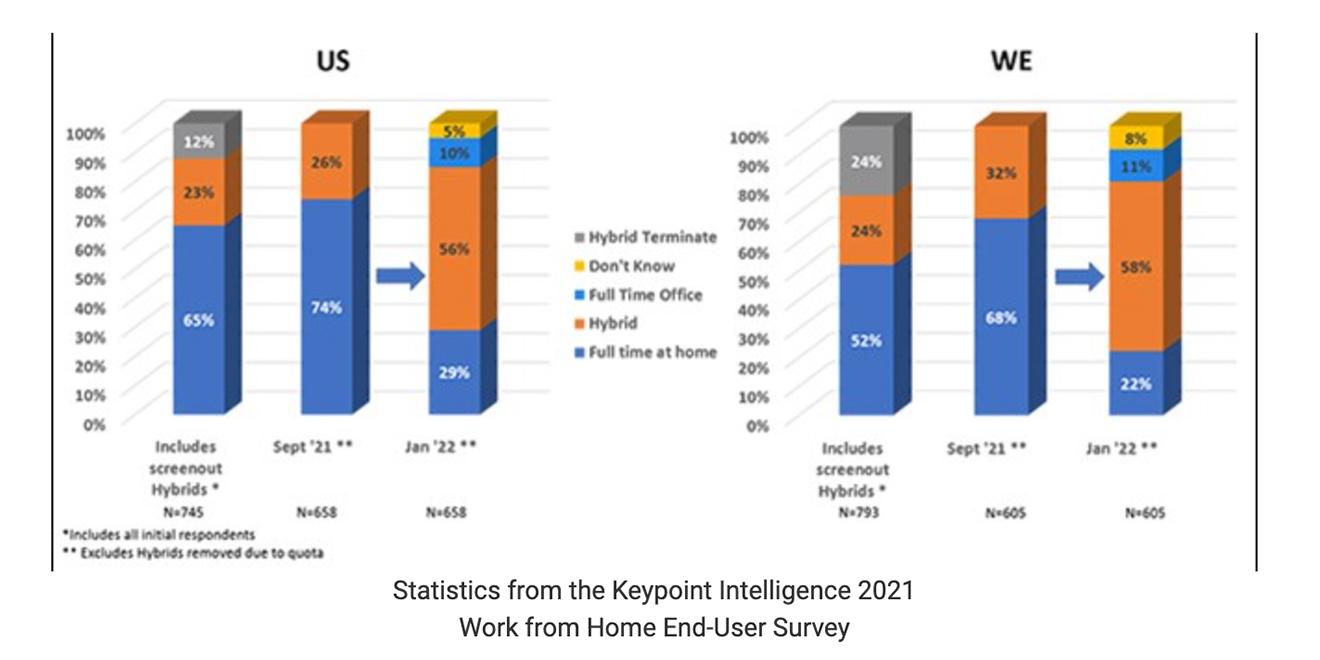Keypoint Intelligence’s Lindsey Naples blogs there are positive trends for the office print market and suggests that January 2022 could see an increase in document output.
In a recent Keypoint Intelligence blog by Lindsey Naples, they report some trends emerging from their recent Future of Office Printing Survey. They looked at work from home and home printing trends.
The report shows that Europe is transitioning to hybrid working faster than the US, where workers anticipate that hybrid working will evolve in 2022. You can read the blog here.
The Keypoint Intelligence survey also highlighted:
- 56% of US respondents expect they will be hybrid by January 2022, while 58% of Europeans believe this is true.
- 10% of Americans and 11% of Europeans expect they will be in the office full time.
- 5% and 8% of US and European respondents, respectively, are unsure of what their work setting will entail.
- The above do not include about 33% of US office workers and 48% of European office workers who are already mostly in the office.
The blog added that the growing hybrid working trend “could have a great effect on the print and supplies markets.” As people work remotely, “the need for many output devices in an office will be lessened, not to mention the effect this will have on paper use and ink/toner.”
In Europe, a snap poll conducted for The Recycler indicated that 73% of women worked two days in the office and three days from home. 19% were working three days in the office and two at home. 6% were working one day at home, four in the office, and just 2% worked one day in the office and four from home.
On the other hand, men are more office-based 64% were working three days in the office and two days from home. 21% were working four days in the office and one at home. 15% were working three days at home and two in the office.
Researchers spoke with 100 people who currently work in a hybrid format. Half of them were women. A common theme from the interviewed women was the ability to plan work and care for children, save childcare costs and reduce commute times. Men were more concerned about missing out on office networking and brainstorming ideas but enjoyed the time and space to liaise more closely with clients. Reduced commuting was also a noted advantage, but childcare didn’t feature as a benefit of hybrid working.
Our take on this: COVID-19 is still with us and is likely to be with us a good while yet. So hybrid working will be a work pattern that will be with us for some time to come. At the same time, remanufacturers and resellers have enjoyed strong results during the pandemic as supply chain issues continue to blight the market. This situation is likely to continue well into 2022 and possibly 2023.









